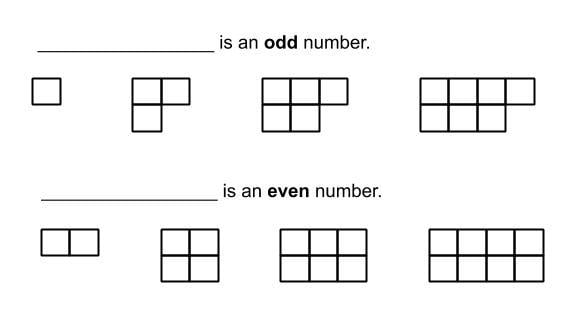It’s great that some of the same powerful strategies that support native-speaking students also assist English language learners (ELLs), even when they’re at various stages of English acquisition.
In this edition of the series Making Online Instruction Work – Now!, we examine how you can support English language learners in online educational settings.
The strategies offered here are relevant to both online learning and face-to-face instruction. However, for online learning, we believe that ELLs will especially benefit when they either:
- participate in scheduled, synchronous sessions using a video conferencing tool, or
- watch pre-recorded videos made by their teacher.
ELL Overview
English language development relies on a variety of acquisition-rich, physical, hands-on experiences that help students build both conversational and academic language skills. The goal is for ELLs to be able to successfully use their existing language knowledge and skills in new situations. To do so, ELLs need multiple opportunities to read, write, listen, speak, and participate in discussions. Fortunately, meaningful language learning opportunities occur in basic interpersonal interactions as well as in academic contexts. But, as with all learning, the success of language activities depends heavily upon the degree to which students personally experience the concepts being discussed.
Consider these five strategies when teaching ELLs in a virtual environment.
1. Make It Visual
Processing spoken language, especially for ELLs, is difficult and can lead to gaps in understanding when they are not supported in other ways. A simple but powerful solution is to use images and pictures. Even your online classroom schedule will become clearer to ELLs when you add intentional images to convey meanings they might not otherwise understand.
In general, ELL students need to SEE or EXPERIENCE what they are learning as much as possible, whether on-site or online
Visual supports benefit ELLs by:
- reducing anxiety
- increasing comprehension
- reducing misconceptions.
In the online teaching realm, you might want to consider using visual supports to make the following more accessible to ELLs:
- schedules
- agendas
- key vocabulary
- important concepts
Examples of visual supports include:
- photographs
- internet videos
- teacher-led videos demonstrating specific concepts
- teacher-led videos illustrating everyday life situations
As you plan for online instruction, be sure to use visuals to help your ELLs more readily access learning opportunities. Consider allowing ELLs to respond to questions with drawings. And consider the wide range of skills your students may have when adjusting instruction: students who are newcomers and those who have been in the country for longer periods of time will have different capabilities and needs.
To learn more about using visuals with ELLs, explore these resources:
- Visual Scaffolding Tips for ELLs – TeachingChannel article with embedded videos
- Using Photos With English-Language Learners – Edutopia article
- The Best Online Sources for Images – Edublogs site by Larry Ferlazzo
2. Scaffold Academic Language
Your ELL students need practice with academic conversations. Because academic vocabulary is more challenging than conversational language, ELLs will benefit from scaffolding that helps them use new terms that relate to the content they are learning.
One way to get them started using academic language is through the use of sentence frames. Let’s look at an example:

Notice that the sentence frame has been strengthened by including visuals.
ELLs will also need time to practice speaking aloud with others. Use features within your video-conferencing tools to set up situations where your ELLs feel comfortable practicing orally. For example, in Zoom, you can use breakout rooms to establish smaller groupings of students to increase their comfort level.
3. Capitalize on Students’ Native Language
Allowing ELLs to use their first language to ask questions and discuss with other students who speak the same language makes them feel connected with the learning and engaged in class. Younger ELLs who may not yet be able to read and write fluently in either English or their native language will benefit from speaking with others in their native language. That being said, online learning for ELLs goes beyond just oral communication; allow older ELL students who already have reading and writing skills in their native language to to use those skills as a way to actively participate. Build upon their first language, don’t try to replace it.
Both of these strategies can be implemented in the online learning environment. They can also be used if there are multiple languages spoken by your student population, and translation is not available for some of them. For oral communication, use your video-conferencing platform to allow ELLs to work together. Use your written instructions, supported by visuals, to convey that assignments can be completed in their first language.
If you need translation, check out these and other online resources:
4. Accept the “Silence”
Your newest ELL students will undoubtedly experience a “silent period” when they are first immersed in an English speaking environment. First and foremost, this is completely natural. As an online educator, embrace the “silence.” It is better that a student in this “silent period” be listening than not attend at all. Never force an ELL student to speak. This could actually set back their future attempts to take a risk and try speaking English. Just be patient and celebrate that they are in attendance and listening to your instruction and the discussions of their peers.
Comprehension (listening) will precede expression. Both of these (verbal comprehension and expression) are prerequisites for reading and writing. One immediate way you can support these students is to assign a same language “buddy” (even if from a different grade level or school) and a source of online translation. Again, this works both online and on-site.
5. Avoid Multi-Meaning Words and Colloquialisms
This one requires us to slow down and really think about the words and phrases that we use in our daily speech patterns. The English language is difficult, and we often compound that with sayings that just don’t make sense to non-native speakers. As an educator of ELLs, try to avoid using words with multiple meaning or colloquialisms. More than one well-meaning teacher has left their ELL students (or colleagues) confused by using some of these phrases:
- “You’ll do great. It’s a piece of cake.”
- “I don’t need that. Just pitch it.”
- “Something is not right. I can’t put my finger on it.”
You get the point here. Our word choice matters, especially for our ELL students who are taking most things we say quite literally.
Summary
Providing a supportive online learning environment with strategic scaffolds will help your ELLs—and other learners—gain from each instructional session and grow more comfortably as English language speakers. Consider the five strategies offered here to refine the support you provide your ELL students’ learning and assimilation.
Coming Soon
Watch for more remote teaching ideas in the Making Online Instruction Work – Now! series. Our next edition will focus on ways to improve student engagement while teaching virtually.
